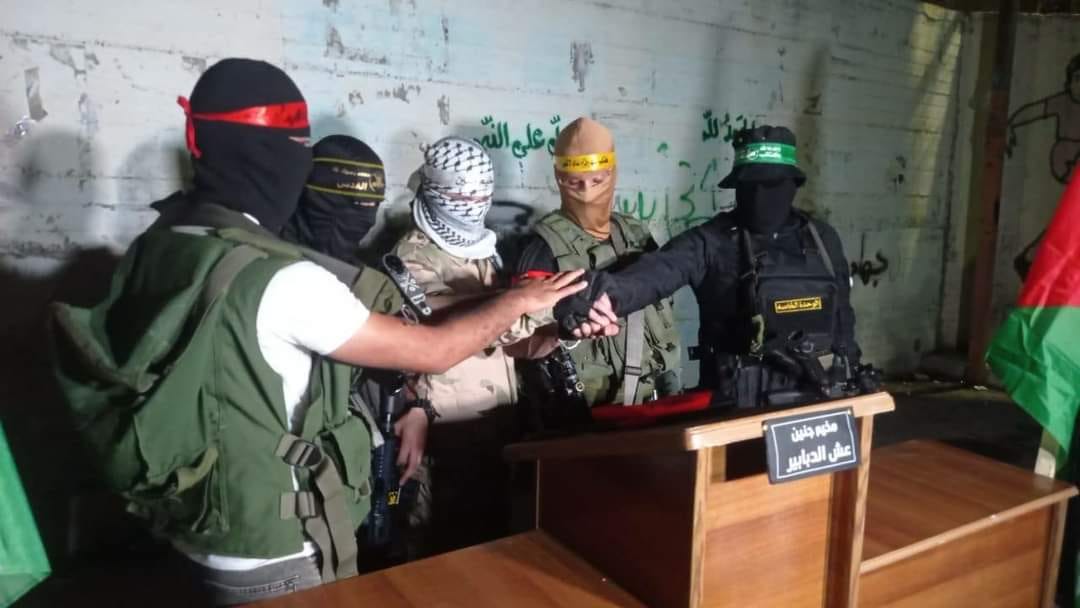
Israeli Defense Forces (IDF) and Palestinian militants traded rocket fire for air strikes again in the worst bout of violence Gaza has seen since an 11-day war in 2021 that killed hundreds of Palestinians and displaced 72,000 more, according to the United Nations. Unlike 2021, where the fighting was between the IDF and the fundamentalist Sunni group administering Gaza, HAMAS, the recent exchanges of rockets and airstrikes were between the IDF and a smaller, more militant organization and ally of HAMAS, Palestinian Islamic Jihad (PIJ). PIJ receives significant resources from Iran, making them formidable despite being smaller and having less infrastructure than HAMAS—who must at least appear to run daily affairs in Gaza and thus cannot focus all its energies on militant activities as does PIJ.
PIJ began firing rockets at Israel in retaliation, after an August 5th raid that led to the arrest of one of their leaders in the West Bank, Bassam al-Saadi. The Israeli Air Force responded by striking targets in Gaza that it said were specific to PIJ, killing a PIJ commander, Tayseer al-Jaabari, on the night of August 5th. A second veteran PIJ leader, Khaled Mansour, was similarly killed in a daytime strike on August 6th. Former Israeli Air Defense Forces commander Zvika Haimovich told Reuters he suspects current Israeli leadership is carefully striking targets exclusive to PIJ rather than other militant groups in Gaza so as not to encourage others beyond PIJ to join the conflict. Israeli airstrikes have so far killed 11 Palestinians and wounded others, while the Iron Dome missile defense system has intercepted the majority of PIJ rockets without Israel reporting any military or civilian casualties.
On Sunday, August 7th, an Egyptian-brokered cease-fire took effect, putting a temporary end to hostilities between the IDF and PIJ.
Weaponry
In the clashes that started the first week of August, various factions, especially the "Saraya Al-Quds" (the armed wing of the Palestinian Islamic Jihad), launched attacks against Israel. In these attacks, for the most part, the most common weapons used by Palestinian factions were locally made rockets produced by Palestinian militants.
Some of the rockets that they produce can be seen in a video recently released by "Saraya al-Quds", the vanguard group of the attack. From the video one can determine the names of these rockets: "S.Q10km". While naming this rocket, it seems that the initials of the faction's name and the average range of the rocket were used.
While there are of course other rockets used by SaQ, so far there is no clear data on the model of other rockets fired by SaQ in August. Still, it is quite possible to say that the group used various rockets of different sizes.
In another video released by SaQ, it was stated that a fighter attacked an IDF aircraft. This video shows the SaQ fighter using a 9K32M "Strela-2M" man-portable air-defense system (MANPADS). It can also be observed that the MANPADS has a custom battery. Similar MANPADS are used by other Palestinian factions from time to time, although not in the offensive of August 2022.
Another common weapon SaQ uses is an Iranian-made 120mm HM-16 "Hadid" mortar, which is also frequently used by other groups in the region. HM-16 mortars were commonly used by different groups, both in previous conflicts and in the 2022 August offensive.
Although SaQ/PIJ played the leading role in the recent round of conflict, other groups also conducted offensive operations against Israel. Some of these attacks were carried out by the "Al-Aqsa Martyrs' Brigades".
The al-Aqsa Martyrs' Brigades has recently published various photos and videos of the weapons used in their attacks. The group, like other factions, uses mostly regionally made rockets. In August 2022, they appear to be using 107mm rockets.
The general structure of these rockets look to be the same as that of the Chinese "Type 63-2" and Iranian "Fadjr-1" rockets. The rockets also seem to be fired by craft-produced launchers/tubes, which are mostly hidden underground.
Besides these rockets, the al-Aqsa Martyrs Brigades also uses 120mm HM-16 "Hadid" mortars like other factions.
Two of the other groups involved in the conflict are the "Abu Ali Mustafa Brigades" (Armed wing of the Popular Front for the Liberation of Palestine—PFLP) and the "National Resistance Brigades" (Armed wing of the Democratic Front for the Liberation of Palestine—DFLP), which are Marxist groups operating in the region.
The "Abu Ali Mustafa Brigades", like other groups, widely use locally produced rockets and Iranian HM-16 "Hadid" mortars. The group also prefers to hide the mortars underground for security purposes.
The armed wing of the DFLP, which has a Marxist ideology like the PFLP, "National Resistance Brigades" also fired various locally produced rockets during recent conflicts.
Additionally, "Mujahideen Brigades" also joined the fight by firing various rockets at Israel.
The rockets fired by the "Mujahideen Brigades" appear to be designated "S.M.10". The "S.M" in the name of the rockets stands for "Saraya Mujahideen". The number 10 at the end indicates the rocket's range of 10km.
The rockets fired by the groups in August 2022 are fin-stabilized and locally produced. Many different numbers and volumes of rockets are produced in Gaza. Although many of these rockets are intercepted by Israel’s Iron Dome, mass-fired rockets can occasionally pass the sophisticated missile defense system.















